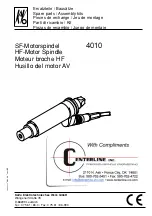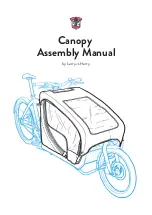
Stretch the roof rafters (4) and apex to eave poles
(10) - apply as much pressure as possible without
causing any damage. Now is good time to add the
intermediate bracket pad and roof rafters (5) that
come with larger awnings. These clamp to the
awning frame at the front. Raise the legs to their
approximate correct height
—check that the pegging
points still comfortably reach the ground (K).
PEGGING
Start pegging at the rear of the awning closest to
the caravan. Take the rear corners and peg them
as close to and preferably slightly under the cara-
van, this will give a close fit. Next peg the front cor-
ners making sure that you pull the pegging point
and the corner frame leg in a diagonal direction
away from the caravan
—this will give good tension
to the front and sides. Adjust the legs as neces-
sary. Peg the intermediate pegging points, pegging
the points either side of doorways first. These
doorways should be cross pegged - the points
should be pulled across each other. Once com-
pleted the awning should look taut without too
many creases - if necessary readjust the pegging
and adjust the height of the legs and tension the
roof poles.
STORM TIE DOWNS
If you are expecting to use your awning in windy
weather we recommend the sue of the optional tie
down kit. All Carnival awnings come complete with
fixings
—just clip each tie down into the buckle (L)
and firmly peg the other end (M). We do not rec-
ommend the use of tie down kits that go over the
awning roof as these can damage the frame and
canvas.
PEGS
The Fiesta awning comes complete with general
purpose plastic pegs. These will be suitable for
many sites but there will be some instances where
different pegs will be necessary. Your dealer will
stock a range of pegs suitable for different types of
ground. For maximum effectiveness, pegs should
be driven into the ground at a 45°angle away from
the pegging point. CAUTION: Pegs can be sharp.
Do not allow children to play around the awning
and ensure that suitable protective footwear is
worn.
K
M
L


























